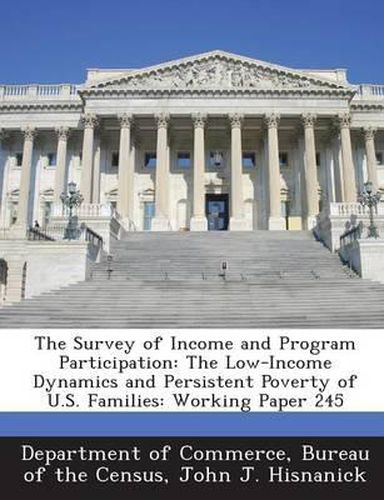Readings Newsletter
Become a Readings Member to make your shopping experience even easier.
Sign in or sign up for free!
You’re not far away from qualifying for FREE standard shipping within Australia
You’ve qualified for FREE standard shipping within Australia
The cart is loading…






Are those in poverty likely to remain there or can they move out of this situation without help from other sources? Our understanding of those in or near poverty is primarily based upon the analysis of either annual income or the income distribution from cross-sectional survey data. It has been argued in the literature that using this type of data can be misleading when faced with questions pertaining to transitions in and out of poverty. Studying the persistence of poverty should focus on those characteristics of individuals and their families, in conjunction with labor market situations, in order to provide an insight into why the situation continues. Using the Survey of Income and Program Participation (SIPP) 1996 panel, it was possible to investigate low-income dynamics and model family incomes for the years 1996-1999. This paper provides a descriptive analysis that evaluates the low-income dynamics for families, their exit and re-entry rates into low-income, as well as investigating family income and poverty outcomes based upon a components-of-variance model that identifies permanent and transitory factors and provides insight into low-income dynamics.
$9.00 standard shipping within Australia
FREE standard shipping within Australia for orders over $100.00
Express & International shipping calculated at checkout
Are those in poverty likely to remain there or can they move out of this situation without help from other sources? Our understanding of those in or near poverty is primarily based upon the analysis of either annual income or the income distribution from cross-sectional survey data. It has been argued in the literature that using this type of data can be misleading when faced with questions pertaining to transitions in and out of poverty. Studying the persistence of poverty should focus on those characteristics of individuals and their families, in conjunction with labor market situations, in order to provide an insight into why the situation continues. Using the Survey of Income and Program Participation (SIPP) 1996 panel, it was possible to investigate low-income dynamics and model family incomes for the years 1996-1999. This paper provides a descriptive analysis that evaluates the low-income dynamics for families, their exit and re-entry rates into low-income, as well as investigating family income and poverty outcomes based upon a components-of-variance model that identifies permanent and transitory factors and provides insight into low-income dynamics.